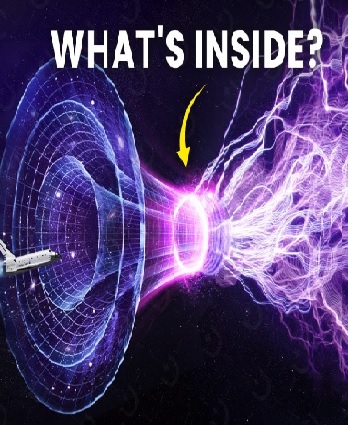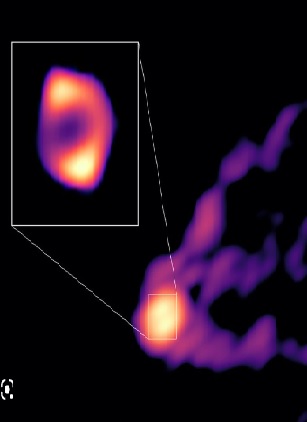The exciting Supermassive black hole M87 blasts a jet 1st time

The images of a supermassive black hole emitting a jet of material were captured for the first time, offering insight into the universe’s mysteries.
Introduction to Supermassive Black Holes
Supermassive black holes are fascinating objects in the universe that have captured the imagination of scientists and the public alike. They are enormous, with masses millions or even billions of times that of the sun. These objects exist at the centers of most galaxies, including our Milky Way, and play a crucial role in shaping the structure and evolution of their host galaxies.
What is M87 Black Hole?
M87 is a giant elliptical galaxy located in the Virgo cluster, about 55 million light-years away from Earth. At its center lies a supermassive black hole with a mass of 6.5 billion suns, the first-ever black hole to be imaged directly. This black hole, also known as M87*, has been the subject of intense study by astronomers for decades, and it continues to reveal new surprises.
What is a Jet in Astronomy?
A jet is a narrow stream of particles that is emitted from the vicinity of a black hole or other compact object. Jets can be observed across a wide range of wavelengths, from radio waves to X-rays, and they are thought to be powered by the rotation of the black hole’s accretion disk. Jets are an important tool for studying the physics of black holes and the surrounding environments.
The First-Ever Image of M87 Black Hole Jet

In April 2019, the Event Horizon Telescope (EHT) collaboration released the first-ever image of a black hole, capturing the shadow of M87* surrounded by a glowing ring of gas. The image was a major milestone in astrophysics and provided the first direct evidence for the existence of black holes. But the image also revealed something unexpected: a bright jet of plasma extending from the black hole’s center, spanning thousands of light-years.
The Discovery of the Blast from M87 Black Hole Jet
In August 2020, astronomers using the Chandra X-ray Observatory and other telescopes detected a sudden increase in the brightness of the M87 jet, signaling a powerful blast of energy from the black hole’s center. The blast was caused by a shock wave that traveled through the jet at nearly the speed of light, heating the plasma and causing it to emit X-rays.
The Power Behind the Blast from M87 Black Hole Jet
The energy released in the M87 black hole jet blast was estimated to be equivalent to about five times the mass energy of the sun. This immense power is thought to be generated by the black hole’s strong magnetic fields, which twist and accelerate the plasma in the jet. The blast provided a unique opportunity for scientists to study the extreme physics of black holes and their jets.
The Impact of the M87 Black Hole Jet on Astrophysics
The discovery of the M87 black hole jet blast has important implications for astrophysics and our understanding of the universe. It provides new insights into the processes that govern the behavior of black holes and their
The Role of Technology in Discovering the M87 Black Hole Jet Blast
The discovery of the M87 black hole jet blast would not have been possible without the advanced technology used by astronomers. The Chandra X-ray Observatory, along with other telescopes, provided crucial data that allowed scientists to understand the physics behind the blast. Additionally, the Event Horizon Telescope, a network of radio telescopes around the world, was essential in capturing the first-ever image of a black hole and its jet. The role of technology in astronomy continues to be crucial in advancing our understanding of the universe.
The Future of Research on M87 Black Hole Jet
The discovery of the M87 black hole jet blast has opened up new avenues for research on black holes and their jets. Scientists will continue to study the properties of the blast and the mechanisms behind it, as well as the interaction between the jet and the surrounding environment. Future observations using advanced telescopes, such as the upcoming James Webb Space Telescope, will provide even more detailed data on the M87 black hole jet and other objects in the universe.
The Possibility of Similar Black Hole Jet Blasts in the Universe
The discovery of the M87 black hole jet blast raises the question of whether similar events occur in other galaxies. Scientists have already observed jets and outbursts from other black holes, but the power of the M87 blast is unprecedented. Studying these events will help us understand the evolution of galaxies and the role of black holes in shaping their environment.
Implications of the M87 Black Hole Jet Blast on our Understanding of the Universe
The discovery of the M87 black hole jet blast has important implications for our understanding of the universe. It provides new insights into the physics of black holes and their jets, and how they interact with the surrounding environment. The power of the blast is a testament to the extreme conditions that exist in the universe, and the role of black holes in shaping the evolution of galaxies.
Conclusion
The discovery of the M87 black hole jet blast is a landmark event in astrophysics, providing new insights into the extreme physics of black holes and their jets. The role of technology in astronomy has been crucial in enabling this discovery, and future research will continue to advance our understanding of these fascinating objects. The implications of the M87 black hole jet blast on our understanding of the universe are significant, highlighting the importance of studying these objects and the environments in which they exist.
Also read this post for more updates: Why Northern Lights aurora borealis shifted in the United States: A Natural Phenomenon Explained
Blue Origin Joins NASA for Space Tech Collaboration Round 2
Mars 1st Seismic Waves Confirm Liquid Core Existence
Runaway black hole births stars
FAQ
What is a supermassive black hole?
A supermassive black hole is a type of black hole that has a mass equivalent to millions or billions of times that of our sun.
What is the M87 black hole jet blast?
The M87 black hole jet blast is a powerful outflow of gas and energy from the supermassive black hole at the center of the M87 galaxy.
How was the M87 black hole jet blast discovered?
The M87 black hole jet blast was discovered using a network of radio telescopes called the Event Horizon Telescope, which captured the first-ever image of a black hole and its jet.
What is the significance of the M87 black hole jet blast?
The M87 black hole jet blast provides new insights into the extreme physics of black holes and their jets, and how they interact with the surrounding environment.
Can similar black hole jet blasts occur in other galaxies?
Yes, similar black hole jet blasts have been observed in other galaxies, but the power of the M87 blast is unprecedented.
What is the role of technology in discovering the M87 black hole jet blast?
Advanced telescopes, such as the Chandra X-ray Observatory and the Event Horizon Telescope, were crucial in providing data that allowed scientists to understand the physics behind the M87 black hole jet blast.
